The yellow paving blocks - ceramics, aesthetics, symbolism
For more than a century - 107 years, the yellow paving stones cover like a gold-coloured carpet the old Sofia centre, as well as its streets in different directions, flowing into the dense street network.
At the time, Sofia 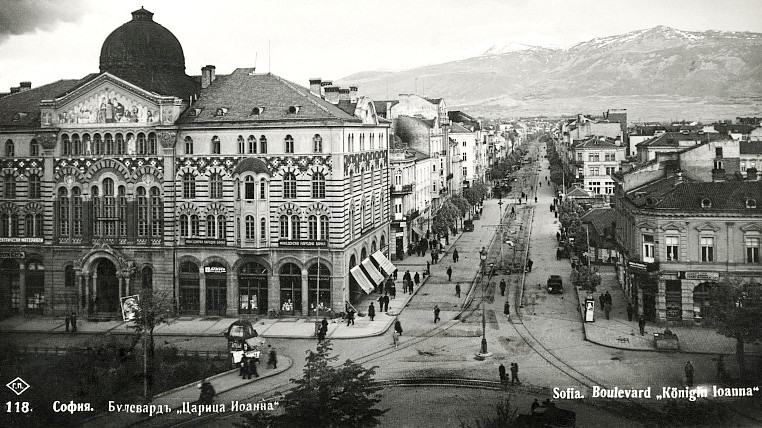
Chief Architect of Sofia was Adolf Kolář, who was appointed during the period of the Provisional Russian Administration; Joseph Oberbauer was Sofia's chief painter and engineer; Eng. Georg Prošek was at the Technical Department of the Municipal Administration; the Bartel brothers worked at the Cadastral Office of the municipality, and so on.
The city panorama was constantly changing, enriched with remarkable buildings, and just then it began to take shape in Secession style. The folklore building and decorative traditions were skilfully intertwined in its aesthetic system. The intensive zoning and public works carried out and the real ardour in the young capital, transformed it in just two or three decades from a typical oriental place into a city with the ambition to have a face with European dimension.
With the accession of 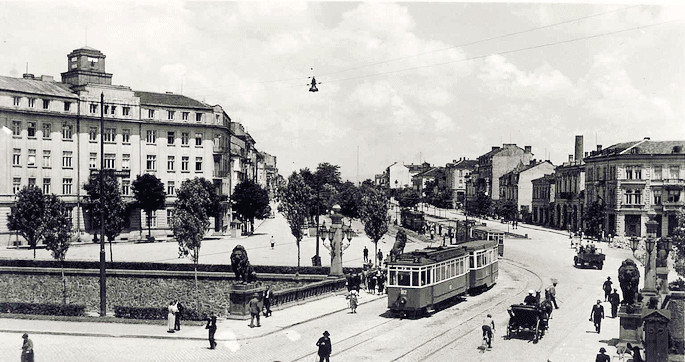
At the end of the XIX century and the beginning of the XX century, the central parts were shaped and Sofia was then a city with a European centre. Together with the original buildings the capital was electrified, in 1901 the first tram was launched, the number of telephone subscribers increased. At the same time, the first Bulgarians - architects, academically educated in Vienna, Prague and other cities of Austro-Hungary returned to Bulgaria. The young, talented Bulgarians Yordan Milanov, Georgi Fingov, Petko Momchilov, Nikola Yurukov put their knowledge and professionalism in the construction of the Fatherland and with their deeds ranked among the builders of modern Bulgaria.
In the first decade of the 20th century, 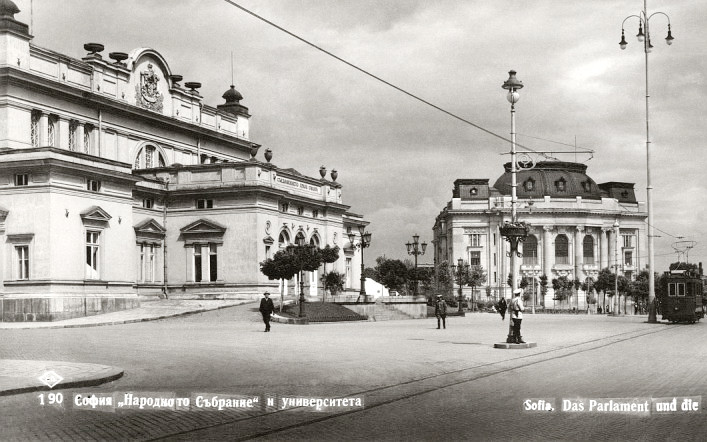
Professor Balan had four more brothers - General Georgi Todorov, volunteer, participant in the Serbo-Bulgarian War (1885), graduate of St. Petersburg Military Academy, participant in the Balkan wars and World War I, commander II and III Army, the victorious Rila Division, who pronounced the most accurate, uncomforting but inspiring words about the imposed Treaty of Neuilly: "We are defeated, but we are not beaten". The other brother is Prof. Atanas Todorov, founder of forensic medicine in Bulgaria, who on the basis of considerable research, proved that Yavorov had no fault of Laura's death. Undoubted contribution to the foundation of district heating in Bulgaria had the third brother, Eng. Mihail Balanski, who also recorded his name in other large buildings in Sofia, such as the Court of Justice, the Bulgarian National Bank and others. The fourth brother, Martin Todorov aka Teodorov occupies an important and historic place among the mayors of Sofia. He was a prominent Sofia lawyer, politician, member of the People’s Liberal Party (the Stambolov’s party). At that time, Prime Minister was Dimitar Petkov, leader of this party, a loyal friend and successor of S. Stambolov. The people’s liberals had majority in the Municipal Council. Mayor was Petko Nikolov, who surprisingly resigned ‘for personal reasons’ and the mayoral post was vacated.
Protocol No. 28 of July 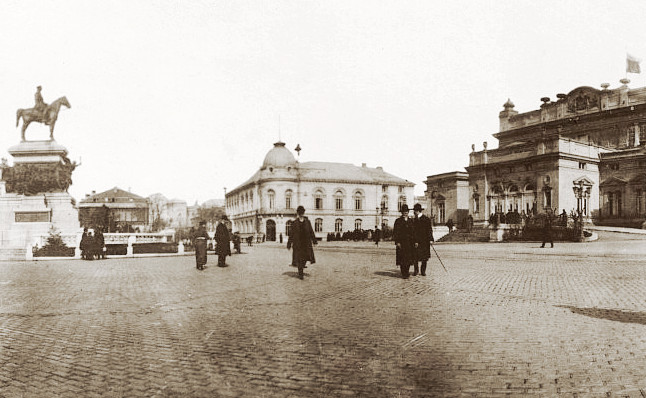
Martin Todorov started a wide range of construction and development activities. He accelerated the construction of the Boyana water main and on December 5, 1907, Sofia citizens were drinking fresh, clean water from the high parts of Vitosha Mountain; new corrections of the river-beds were made to the Perlovska and Vladayska Rivers; tramlines were extended, the construction of a new branch of the fire brigade in “Tri Kladentsi” quarter was completed; the National Theatre (1907) and “Maychin Dom” Hospital (19.12. 1907) were opened; the construction of five schools began. Intensive work began on the design of the Synagogue, the Central Sofia Public Bath and the Market Hall. The development of the central streets and squares began, and most remarkably –the paving with ceramic pavement - the yellow paving blocks, imported from Austria-Hungary. This new original emblem is undoubtedly related to the mayoralty of Martin Todorov. I am emphasizing this historical fact, because research and publications on the history of the yellow paving blocks are scarce, almost absent, and this circumstance indulges in fantasies and free writings self-proclaimed and pseudo-historians, and journalists. Various versions are circulated of Prince Ferdinand's ‘exquisite taste’ and megalomaniacal pretensions. The most popular is that the yellow paving blocks are a gift to the prince on the occasion of his wedding with the princess Maria Luisa. Similar and other rumours are strongly contradicted by the documents that have stayed intact for over a century in the archive.
Legitimate is 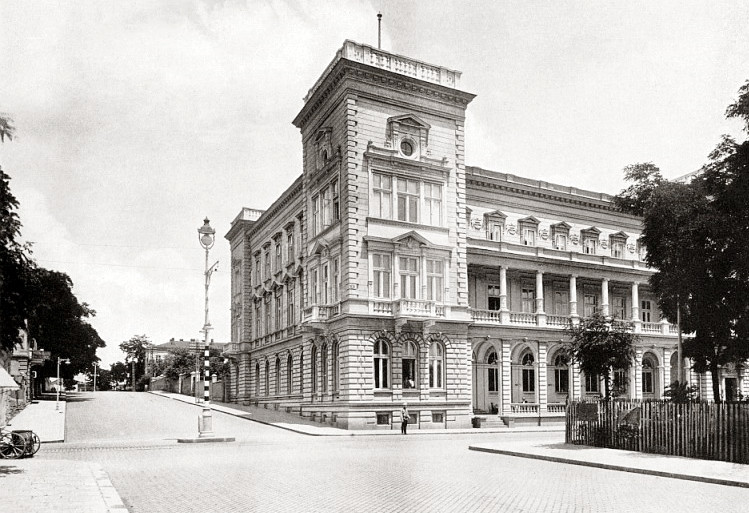
The surface of Sofia streets and squares was discussed for the first time at a meeting of the municipal council on February 27, 1906. The mayor Martin Todorov held an extensive speech outlining three options for paving the streets and squares - stone, ceramic or asphalt. The mayor opposed the asphalt surface and was a hot supporter of the stone and ceramic. After the discussion, two committees of experts were set up to examine in detail and to rule on the ceramic surface on 16 and 18 of March. Both committees proved the advantages of the yellow paving blocks, but they were very expensive and therefore the municipality went for the stone blocks of syenite extracted from the stone quarries of Vitosha, owned by the municipality.
For the implementation of the pavements, as well as for payment of the commissioned large-scale construction, Mayor Martin Todorov entered into the second external loan, after Dimitar Petkov, amounting to 35,000,000 golden levs with German banks. A law was passed for this loan, which obliged the state as guarantor, and specified what exactly the money will be spent for by the municipality. By Protocol № 4 dated 23.01.1906 the Sofia Municipal Council authorized the mayor Martin Todorov to rise the loan on behalf and for the account of Sofia Municipality in the amount of 35,000,000 golden levs with an emission rate of 81%, payable within 100 (hundred) semesters, or for 50 years. The loan was exempt from all levies of all time. Later, this loan, which had caused much trouble for the financial situation of the municipality, will be liquidated by Eng. Ivan Ivanov in the late 1930s.
Mayor Martin Todorov acted smartly and quickly and prepared an extraordinary additional budget of 29,798,000 levs. On March 29, 1906 the extraordinary budget was discussed and adopted by the municipal council. It included the repayment of the old loan of £ 10,000,000 (1898) with interest, expenses and commissions, the repayment of a loan from the state, the financing of the construction of the Mineral Bath, the construction of the Market Hall, five schools, the correction of the river-beds and the pavement of Old Sofia.
The laying of the pavement was discussed both in the Permanent Presence and in the Municipal Council. It was decided to develop Terms of Reference for the auctioning of developer with a specific task - "making the streets and squares in the centre of Old Sofia with ceramic pavement". The Terms of Reference were developed by the Zoning Office at the City Hall. They were discussed at a meeting held on October 14, 1906 (Protocol No. 48). The Terms of Reference were elaborated in detail, in main sections, subsections, and activities specific to the particular job: subject of activity, content, quantity, conclusion of a contract, starting and finishing dates, supply of materials, sequence of tasks. On October 16, the discussion continued, including the quality of work, the pay of the workers, the preparatory works, the way the blocks should laid, the sand, the use of resin and other details.
The auction was held "with a limited number of developers", as was announced in the Invitation to Tender. The successful tenderer was the Bulgarian Industrial Ceramic Company “Izida”. The company's factories, as well as its management, were located at Novoseltsi Station. The company was established with the support of Stefan Stambolov whose policy towards the industrial development of Bulgaria was strongly protectionist for the local industry. The activity of the workshop grew and in 1898, it was registered with the Sofia District Court under No. 63, promulgated in the State Gazette, No. 220, 1898, October 12.
According to the tender documentation, the developer had the obligation to be an importer, a contractor and to represent the manufacturer. From here begins an unofficial secret of the import of the yellow paving blocks, which were recorded as ceramic pavers or pavement in the technical documentation as well as in contracts and files of the Municipality. This definitely indicated the production method. As the manufacturing of ceramic paving blocks was not mastered in Bulgaria, a specialized enterprise in Austro-Hungary was subcontracted. Thus, for more than 100 years it had only been known of the import of the pavement, but nothing of its birthplace and this fact had given food for different stories.
Only in 1960, in 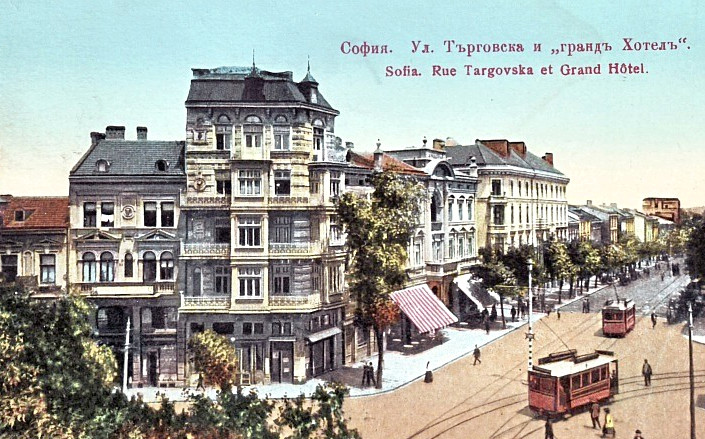
According to the conditions for procurement, the transportation of the ceramic paving blocks was at the expense of “Izida” and the customs fees were at the expense of the Hungarian company. The archive documents reveal a number of details of the pavement laying technology - the size of the blocks (0,08 m, 0,21 m, 0,10 m), the composition of the concrete sublayer, its thickness - 10 cm, the diagonal arrangement along the street axis, and the use of pentagonal blocks at the edges.
The municipality exercised constant control during the laying of the yellow pavement. Upon completion of half of the works the mayor appointed a commission of representatives of the Roads and Pavements Unit and of the Ministry of Public Buildings to "accept on time the work done so far by the developer". This commission inspected every street, every square meter and evaluated positively the work done so far.
The laying of the ceramic pavement was also brought to the attention of Prime Minister Dimitar Petkov, a prominent politician, a distinguished mayor of Sofia, leader of the People’s Liberal Party, undisputed builder of Modern Bulgaria. He made himself familiar in details, studied carefully the tender documentation, supported the procurement conditions, but waited for the Ministry of Public Buildings to pronounce opinion before giving approval. Therefore, laying of the ceramic paving blocks is not an emotional gift on the occasion of the wedding of prince Ferdinand with Maria Louisa, who at that time was not among the living (1907), was not a whim, but an expression of a municipal policy supported by the state in the period of building a new Bulgaria. There is no mention in any document of a name of a donor or of princely persons as authors of this aesthetic-functional activity.
During the two years, 1907 and 1908, nearly 60 thousand 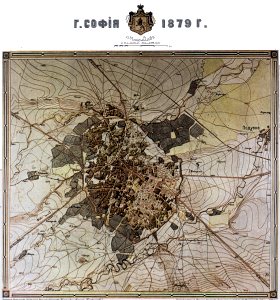
Time is one of the most objective and accurate judges of creations of the human hand. After a quarter of a century, in 1934, Eng. Ivan Ivanov discussed in a comprehensive report the history of urban development in Sofia from the Liberation until the mid-1930s and highly appreciated the laying of the ceramic pavement. This, together with everything carried out until 1912 and the subsequent giant construction of the Rila Water Main in the late 1920s and early 1930s, ranked Sofia among the most advanced cities in Europe.
Public works in Sofia have a background. It started on the eve of the Liberation and in the first years of the period of the Provisional Russian Administration in Bulgaria. The drama of the streets of Sofia is difficult to describe - puddles, dirty bogs, mud and stinking waters in the centre of a town located in such a beautiful and picturesque place that have always drawn admiration. On the personal order of prince Dondukov cobblestone pavement was laid at certain places. However, the first pavement in Sofia was laid in 1905, on Maria Louisa Street by the developer Nikola Ivanov, and this fact was met with great satisfaction from both the citizenship and the government. Appreciating the convenience of this stone pavement, municipal authorities were shaping their new policy in the field of urban development. Together with the stone pavement, the municipality discussed and put as a first item pavement with ceramic blocks in Old Sofia.
The final completion of the paving with ceramic blocks was in 1909. A commission was appointed with a very important task – to accept the work done on making the yellow ceramic surface. The Commission was precise and demanding, minor faults were identified and the contractor was obliged to remove them within a short deadline. Nevertheless, the enormous work accomplished was satisfactory and "can definitively be accepted".
But work continued. The next municipal governments took care for the maintenance and the renewal of the worn ceramic blocks. In the difficult years after the wars, opportunities were sought for the replacement of the paving blocks, efforts were made for the aesthetics and the beauty of the city. The mayor, General Vladimir Vazov, gave much attention and time to the yellow paving blocks looking for funds for their maintenance. During the bombing raids the beautiful Sofia pavement suffered considerable damage. It had been repaired, the wounds and the bomb pits had been wiped out and the eyes of the citizens of Sofia can enjoy it again.
The changes that have taken place and the desire for a new urban development, carried out on new dimensions and scale by the government, did not include the yellow paving blocks and very often it was at their expense. Their number is decreasing. The yellow paving blocks are an informal monument of culture with multifaceted symbolism. When we say “the yellow pavement", we mean Sofia and its old centre, we have a feeling of governance and power, of aesthetics and luxury. It is difficult to point out such significant monuments of culture. It is unacceptable so unscrupulously to replace the yellow pavement with asphalt. It is imperative that they be given the status of cultural monument in order to protect them from "modern and large-scale thinking officials and similar experts". We have no historic right to be negligent and drain also this source of self-esteem.
Elinka Boyadjieva
References:
- Boyadjieva, E., Experienced Valour, S., 2007.
- Momchilova, G., Teodorov Balan, Alexander. A book about myself. S., 1988.
- Simeonov, S., The Yellow Pavement of Sofia. Sofia, 1960, issue 9.
- State Archive Sofia, Fund 1k, Inventory 1, Archive Unit 85.
- State Archive Sofia, Fund 1k, Inventory 1, Archive Unit 184.
- State Archive Sofia, Fund 1k, Inventory 1, Archive Unit 186.
- State Archive Sofia, Fund 1k, Inventory 1, Archive Unit 187.
- State Archive Sofia, Fund 1k, Inventory 1, Archive Unit 189.
- State Archive Sofia, Fund 1k, Inventory 3, Archive Unit 205.
- State Archive Sofia, Fund 1k, Inventory 3, Archive Unit 424.
- State Archive Sofia, Fund 1k, Inventory 3, Archive Unit 442.
- State Archive Sofia, Fund 1k, Inventory 3, Archive Unit 673.
- State Archive Sofia, Fund 1k, Inventory 3, Archive Unit 677.
- State Archive Sofia, Fund 1k, Inventory 3, Archive Unit 678.
- State Archive Sofia, Fund 1k, Inventory 3, Archive Unit 679.
- State Archive Sofia, Fund 1k, Inventory 3, Archive Unit 680.
- State Archive Sofia, Fund 1k, Inventory 3, Archive Unit 681.
- State Archive Sofia, Fund 1k, Inventory 3, Archive Unit 683.
- State Archive Sofia, Fund 1k, Inventory 7, Archive Unit 728.
- State Archive Sofia, Fund 1k, Inventory 1, Archive Unit 778.
- State Archive Sofia, Fund 1k, Inventory 3, Archive Unit 829.
- State Archive Sofia, Fund 1k, Inventory 3, Archive Unit 832.
- State Archive Sofia, Fund 1k, Inventory 7, Archive Unit 925.
- State Archive Sofia, Fund 1k, Inventory 3, Archive Unit 833.
- Jubilee Book of Sofia, S., 1928
- Jubilee Book of Sofia, S., 2000






